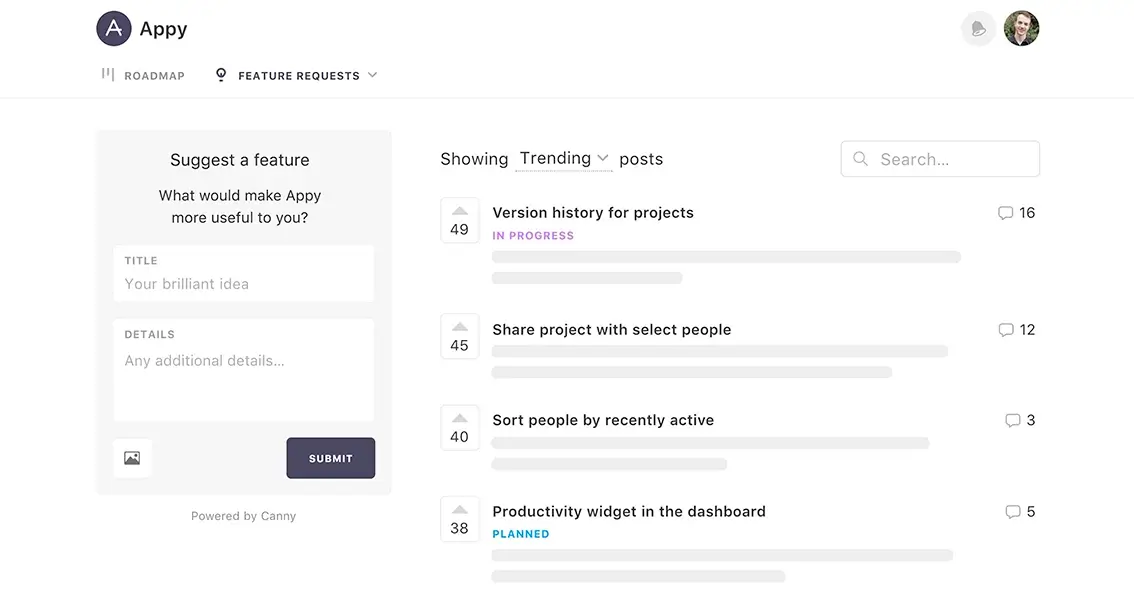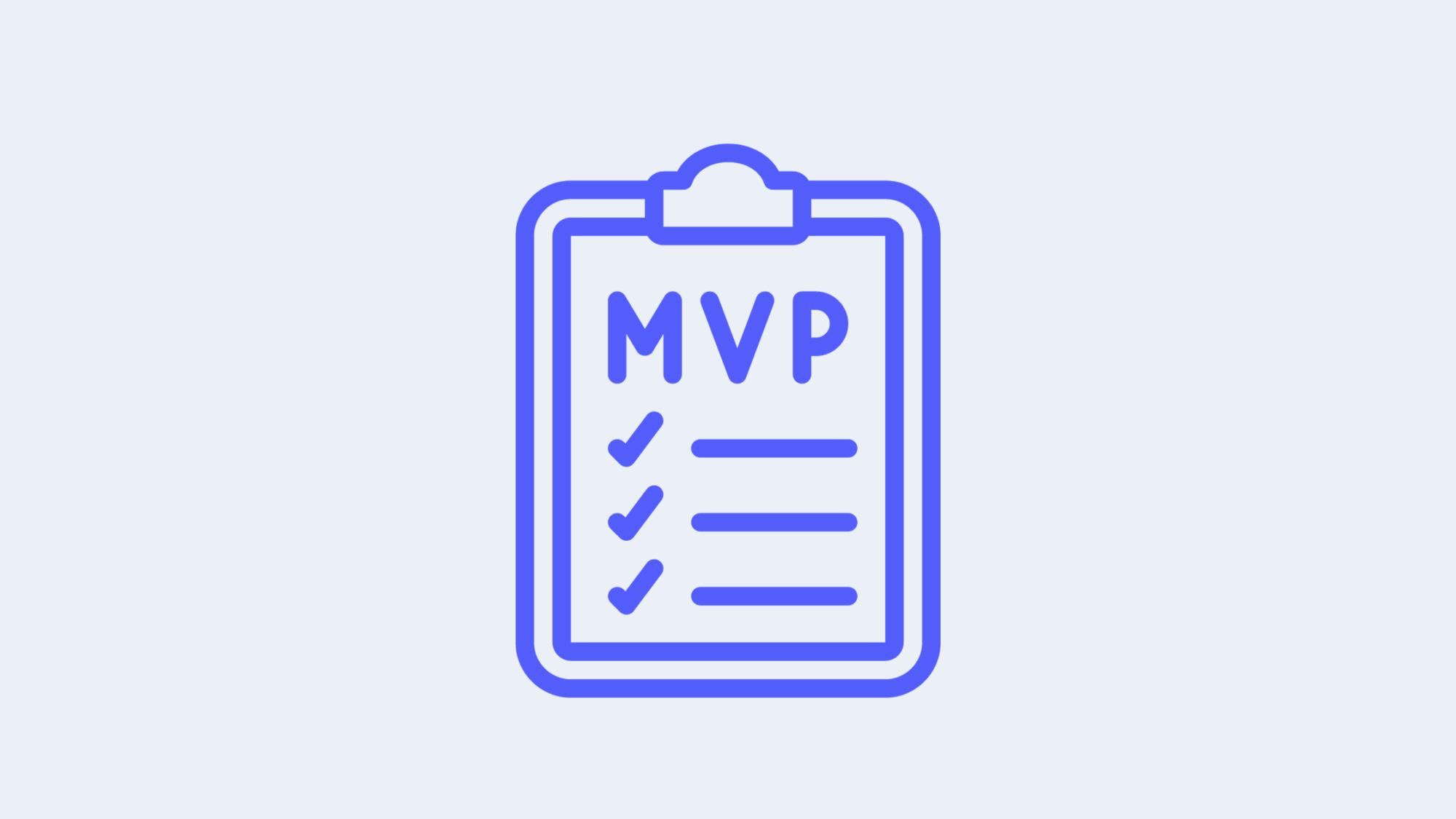In the product world, MVP stands for Minimum Viable Product. It’s a bit like a teaser for your big idea. You show a basic version to people, see if they like it, and then decide where to go next.
MVPs are usually driven by a product manager. They’re the ones making sure the MVP is just right, balancing what users want and what the business needs. They also identify what the base level of functionality they need to deliver is.
The MVP approach is associated with the lean startup method. It’s about building a little, checking how it performs, learning, and then making it better.
Two big names often linked with the MVP concept are Eric Ries and Jeff Bezos. Ries gave us “The Lean Startup,” a guide many of us turn to. And Bezos? He launched Amazon with a simple MVP, selling books online. Now, it’s a giant in the shopping world.
How can MVPs help you grow your business?
Let’s jump into the world of MVPs and find out!
Understanding the MVP concept
The term MVP is incredibly important in product management. It’s a concept that’s reshaped how we approach product development. It helps product managers know if they’re on the right track from the get-go.
Let’s look at a few topics that will help you better understand MVPs.
Defining MVPs and their purpose in product development
The MVP is like the skeleton of your product idea. It’s the bare bones, the essentials that make it function. Why start so basic? Well, it’s all about validation.
It’s costly to pour resources into a full-fledged product. Starting with an MVP helps you gauge if there’s genuine interest. The MVP allows you to test the waters, gauge interest, and gather invaluable feedback.
But it’s not just about saving resources. The MVP approach fosters a culture of adaptability. By starting small, teams can pivot more easily. They can adapt to user feedback and market changes.
It’s a dynamic way of product development that values learning and iteration.
MVPs are often used to describe the most basic versions of new software. This is definitely a type of MVP.
But, there are many types of MVPs and some don’t require any coding at all. An MVP could be as simple as asking users to join a waiting list for a new product. You could manually deliver a service to see if there’s product market fit.
The type of MVP you choose depends on what you need to learn. We’ll discuss the different types you can choose later in this guide.
Using the MVP approach in software and app development
In the tech world, MVPs are a staple. From mobile apps to complex software solutions, the MVP approach is a favorite.
Start with a basic version, get it out to users, and then refine based on feedback. It sounds simple, but it’s a process that requires keen attention to user needs.
Here’s an example. A budding social media app might start with just posting and commenting features. As users engage, developers might see a demand for direct messaging or story features. The MVP approach ensures the product evolves in tandem with user desires.
Adopting the MVP approach throughout your business
MVPs aren’t confined to tangible products. It’s a philosophy that permeates business strategies, too.
Companies of all sizes use MVPs for services, experiences, and even business models. It’s about testing hypotheses, learning from real-world interactions, and constantly iterating.
Imagine a company wanting to launch a new subscription service. Instead of a grand launch, they might start with a pilot in a specific region. Based on feedback and adoption, they refine the offering before a broader rollout.
It’s a strategy that champions real-world learning.
Minimum viable products vs minimum marketable products
We’ve been talking about MVPs, but there’s another minimum you should know about. The minimum marketable product (MMP) is another important product concept.
At first glance, they might seem similar, but there’s a distinction.
The MVP is your prototype, the version you test and tweak.
An MMP is a more polished product, ready to go to market. It has all the important features plus extra touches to be ready for the market. Often the MMP is the first version that users would be willing to pay for.

MVP development approaches
When it comes to crafting an MVP, there’s no one-size-fits-all. Different products and markets might call for different strategies.
You might have to build part of your application. You could merely need to gauge interest via email or landing page registration.
Let’s explore some popular MVP development approaches.
Single-feature MVP
Sometimes, less is more. Instead of launching with a multitude of features, you focus on just one core feature that delivers the most value. It’s like a chef perfecting one signature dish before expanding the menu. This approach is faster and saves development resources.
Example: A social media app launching solely with photo-sharing capabilities, and only after gaining traction, introducing features like stories or filters.
Concierge MVP
Instead of building a full-fledged app, what if you delivered the service to your users? That’s the Concierge MVP. It’s hands-on and manual. You test the waters by providing the service manually first to see if there’s interest.
Example: Food delivery apps initially taking orders via phone calls and manually coordinating deliveries before developing a comprehensive app.
Wizard of OZ MVP
Ever watched ‘The Wizard of Oz’? Behind the scenes, there’s a man pulling the levers. The OZ MVP is similar. On the surface, it looks automated, but behind the scenes, tasks are done manually. It’s a way to simulate a full product without building all the tech.
Example: An early version of a chatbot where real people respond to user queries, giving the illusion of an AI-powered system.
Piecemeal MVP
Why not use existing tools to create a new product? That’s the Piecemeal MVP. Instead of building from scratch, companies use existing tools to deliver the service. It’s resourceful and quick.
Example: A basic online marketplace that starts with just listings and messaging, then adds payment gateways, reviews, and more as user demand grows.
Landing page MVP
A single web page can say a lot. Here, you create a landing page describing your product, its benefits, and a call to action. Usually that asks users to join your product’s waitlist. It’s like setting up a stall at a fair to see how many folks stop by.
Example: A tech startup creating a landing page for an upcoming AI tool, capturing emails of interested users and measuring engagement through click-through rates.
Email campaign MVP
Before there’s an app or a platform, there’s good ol’ email. With this approach, you validate your product idea by sending out targeted email campaigns to potential users. It’s like sending out invites to an exclusive party to see who’s interested. Ask them if they’d be interested in your MVP. You might even link them to a landing page where they can join your waitlist.
Example: A subscription box service gauging interest by emailing potential customers about a new curated box idea, and tracking sign-ups and feedback.
Each approach has its merits, depending on the product, market, and resources available. Product managers can make informed decisions on the best path forward for their MVP.
Implementing the MVP process
Embarking on the MVP journey? It’s more than just a concept; it’s a roadmap to product success.
But how do you go from idea to MVP? Let’s break it down step by step.
Market research and identifying the target audience
Before you even sketch out your MVP, you’ve got some homework to do: market research. Who’s your audience? What do they need? What’s missing in the current market? Dive deep. Surveys, interviews, and competitor analysis can be goldmines of information.
Understanding your audience’s pain points helps you tailor a useful and valuable MVP.
Formulating a product idea and defining the problem it addresses
With research in hand, it’s brainstorming time.
What’s the core problem your product aims to solve? Have you collected customer feedback that highlights that pain point? Maybe it’s a gap in the market, or perhaps it’s an innovative twist on an existing solution. Define it clearly.
Your MVP should be a direct answer to this problem. Remember, it’s not about bells and whistles; it’s about addressing a genuine need.
Selecting an MVP approach
Based on what you’ve learned, you’ll want to choose the best type of MVP to develop.
Do you just need to gauge interest? Maybe you can use a landing page or email MVP.
Do you need to see if users would actually use a service? The concierge or Wizard of Oz approach might be better suited.
Need to see users actually interacting with an application? You’ll likely want to use a single-feature or piecemeal approach.
Different approaches help with different objectives. Choose the one that best suits your needs.
Developing user stories and defining the core features of the MVP
If you’re building software or an application, you’ll likely want to use user stories.
User stories can be the heart and soul of your MVP. They paint a vivid picture of what users aim to achieve with your product.
A good user story is just what is sounds like. It’s a story told by your ideal user of what they hope to do. Step by step.
Let’s dive into a detailed example.
Here’s your user:
“I’m a busy mom. I want a quick and efficient way to order groceries online. I need this so I can spend more time with my kids and ensure they get healthy meals.”
From the user’s perspective:
- Signing up: “I’d like an easy sign-up process. I could even use my social media accounts, so I don’t have to remember another password.”
- Setting my preferences: “I want to specify my dietary needs and favorite stores. I need to ensure the groceries match my family’s preferences.”
- Browsing groceries: “I hope to easily search and filter products. I’d like to read reviews, and see detailed descriptions to make informed choices.”
- Making shopping lists: “It’d be great to save my favorite items, so I don’t have to search for them every time.”
- Ordering: “I want a smooth checkout process. I need the option to choose delivery times. It should have secure payment methods.”
- Tracking my order: “I’d like to know where my groceries are and when they’ll arrive, so I can plan my day.”
- Giving feedback: “I want to rate the products and delivery service to help the store and other users.”
In this example, you not only get a list of features, you also understand the WHY behind them. This helps anyone involved in building your product understand your users. And, that helps you build a better MVP.
Note: developing user stories for your MVP is a popular approach. But, there are other product requirements approaches you may prefer.
Collaborating with the product team to design and build the MVP
Once you have your MVP’s product requirements, it’s time to bring your MVP to life. This is where collaboration shines. Designers, developers, and product managers come together, each bringing their own expertise.
You should all work off of the product requirements you built (likely a user story). From there, you’d build a product roadmap that would plan how you’ll build the MVP.
It’s important to have regular check-ins and feedback loops during development. Many teams find agile methodologies keep development on track and adaptable.
Testing the MVP with real users and gathering user feedback
The moment of truth: releasing your MVP into the wild.
But it’s not a “set it and forget it” deal. It’s about gathering feedback, understanding user behavior, and making tweaks. Whether it’s through beta testing, focus groups, or analytics, this feedback is gold. It’s what will shape the next iterations of your product.
One easy way to gather feedback is to install a user feedback tool like Canny.

Canny lets you add a feedback board to your MVP that centralizes all feedback. Users can leave new feedback, vote on existing ideas, and chat with other users. This builds community around your MVP. It also lets you communicate directly with users and clarify their thoughts.
Evaluating MVP success
There are a number of ways to evaluate MVP success. What’s considered successful will vary by company, industry, objective, and more.
But, let’s look at some of the common approaches.
Assessing customer feedback
The MVP’s out there, and the feedback’s rolling in. It’s like reading reviews for your favorite movie. Some love it, some don’t. But every piece of feedback, whether it’s praise or constructive criticism, is gold. It tells us what’s working and what needs a tweak.
You can use customer feedback management software like Canny to help manage this.
Determining product-market fit
It’s like finding the right puzzle piece. Does our MVP fit snugly into the market? Are people not just using it but loving it? If they are, jackpot! If not, it’s back to the drawing board.
Measuring success by numbers
Numbers don’t lie. Are users signing up? Are they sticking around? And the big one: is there revenue coming in? These metrics (and others) give a clear picture of whether our MVP is a hit or miss.
With the right evaluation methods, product managers can gauge the success of their MVP and decide on the next steps. Whether it’s iterating based on feedback, pivoting to a new direction, or scaling up, the data points the way.
Examples of successful MVPs
Let’s take a look at a few companies that succeeded using the MVP approach.
Dropbox
Dropbox is a classic MVP tale. Instead of building a full product, they made a simple demo video showcasing how it would work. This video was their MVP.
It was straightforward, but it did the trick. People watched, got excited, and signed up for the waiting list in droves. The interest was clear, and Dropbox knew they were onto something big.
Amazon
The e-commerce giant we know today started small. Jeff Bezos began with a basic website selling books.

That was Amazon’s MVP. It was simple, but it tested the waters of online retail. As we all know, the waters were warm, and Amazon expanded, becoming the behemoth it is today.
Airbnb
Airbnb offers a rich platform that helps people find accommodation around the world. Its MVP was far from this. The founders rented out their apartment during a conference when hotels were fully booked. They built a basic site, listed their place, and voila! Airbnb was born.
Zappos
Zappos tested the online shoe market by listing shoes from local stores. They would actually get the stores to ship the shoes for them. This gave the appearance of having a central warehouse. It was a simple MVP that validated the demand for online shoe shopping.
These examples show that you don’t need a fully fleshed-out product to test a concept. Sometimes, a simple MVP can provide enough insights to guide the next steps and lead to massive success.
Using MVPs to build better products
In the product management world, MVPs are invaluable. They allow us to test our ideas, gather feedback, and iterate without burning through resources.
Remember our discussions about Airbnb and Dropbox? They started with simple MVPs, tested their ideas, and grew into industry giants. That’s the power of a well-executed MVP.
So, the next time you’re brainstorming a product idea, think MVP. It’s the first step in turning your vision into reality. And who knows? Your MVP might just be the next big thing.






